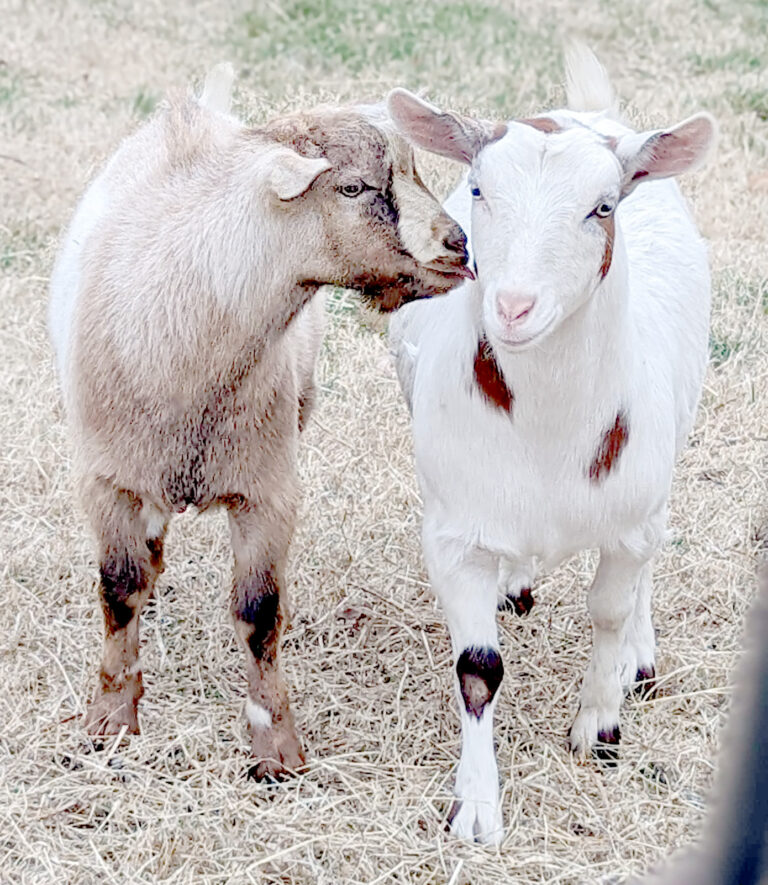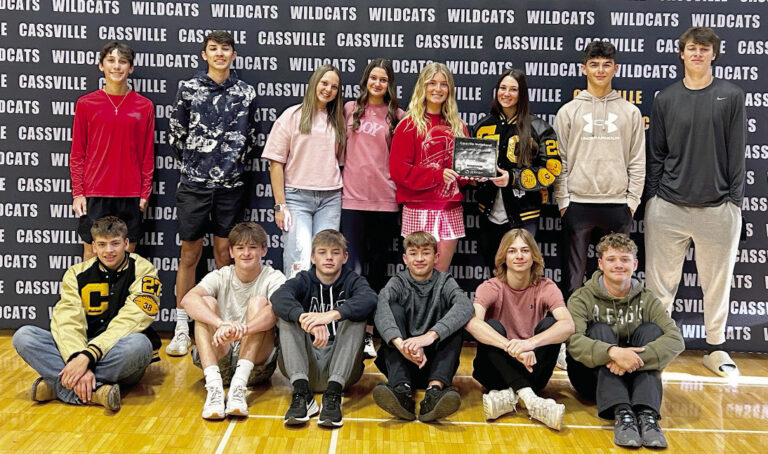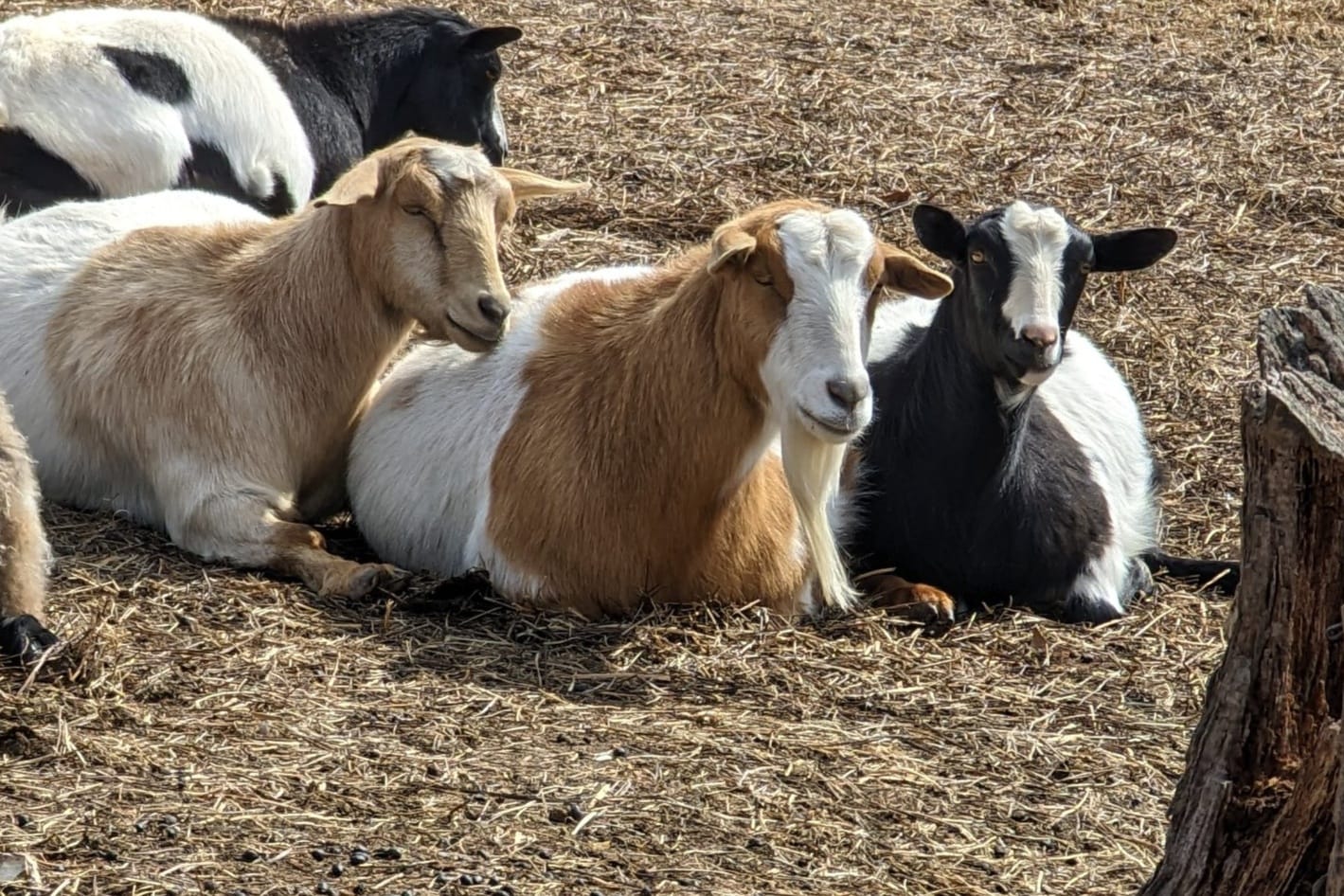
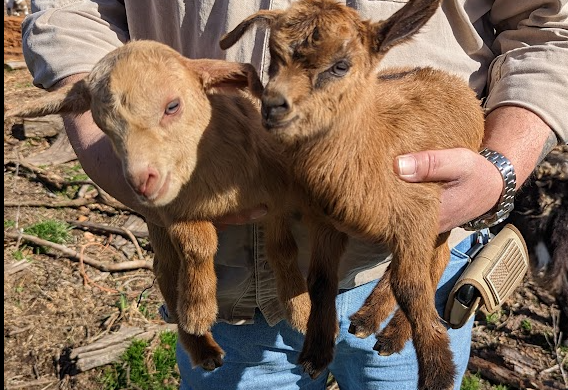
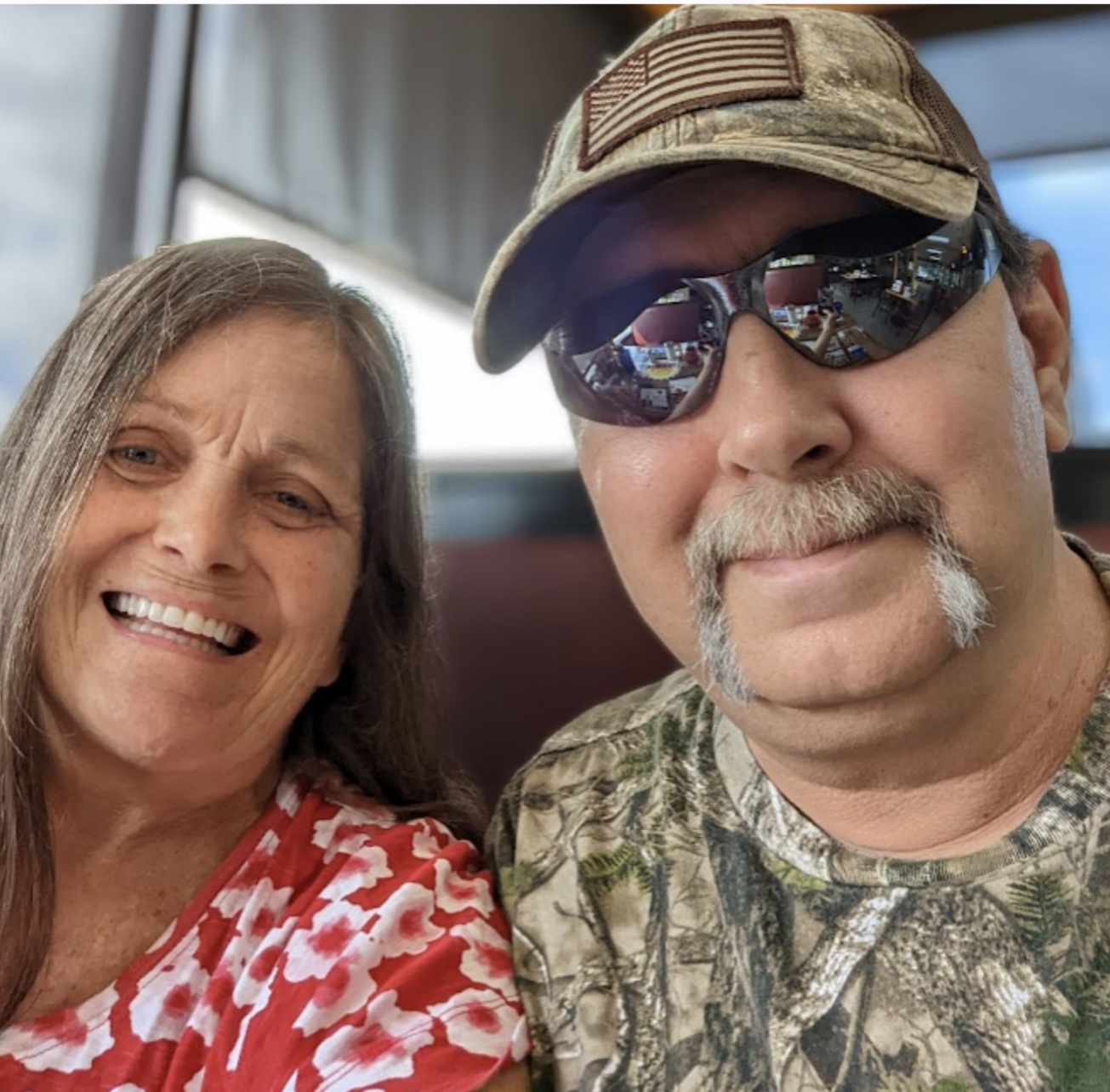
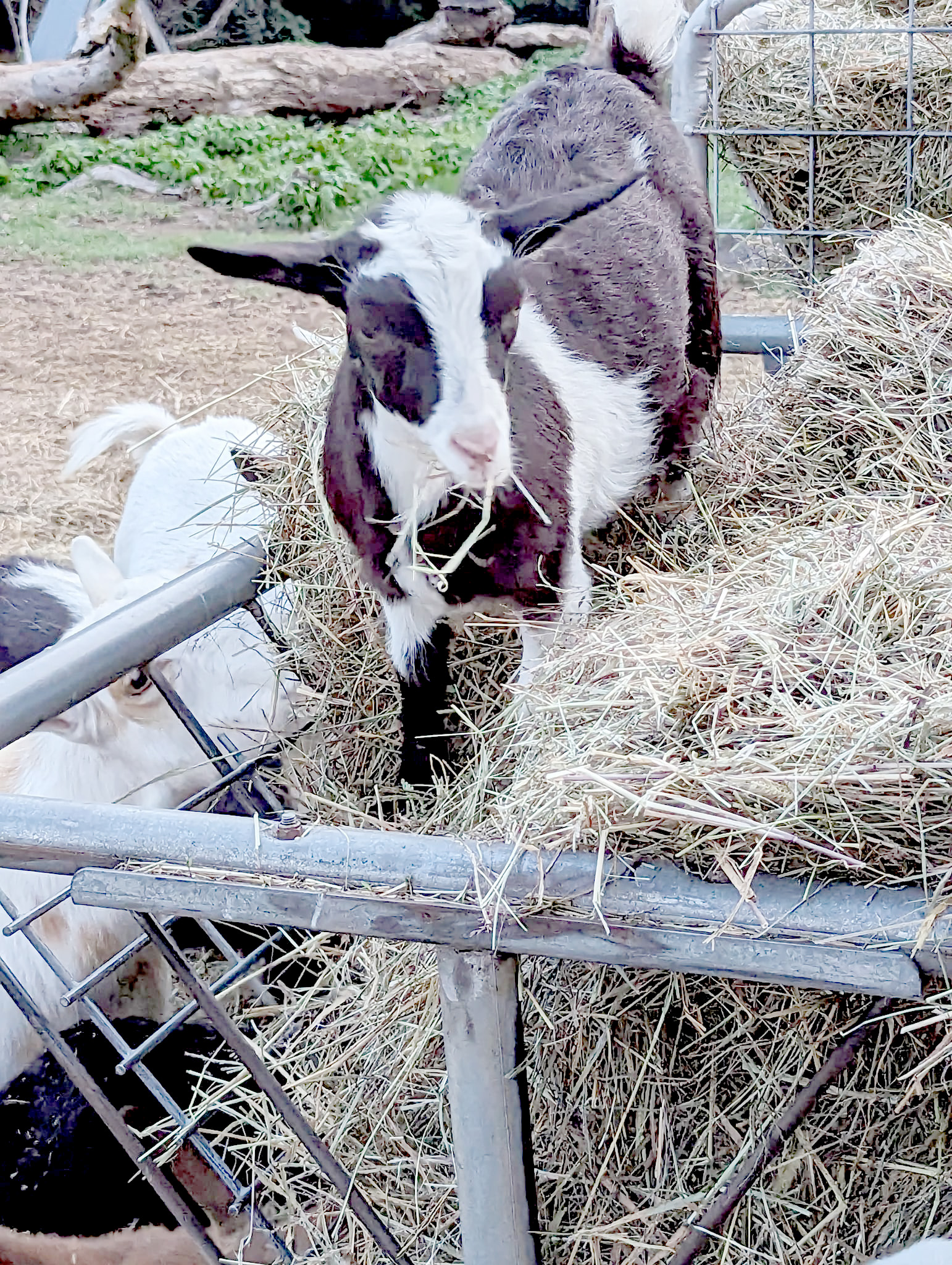
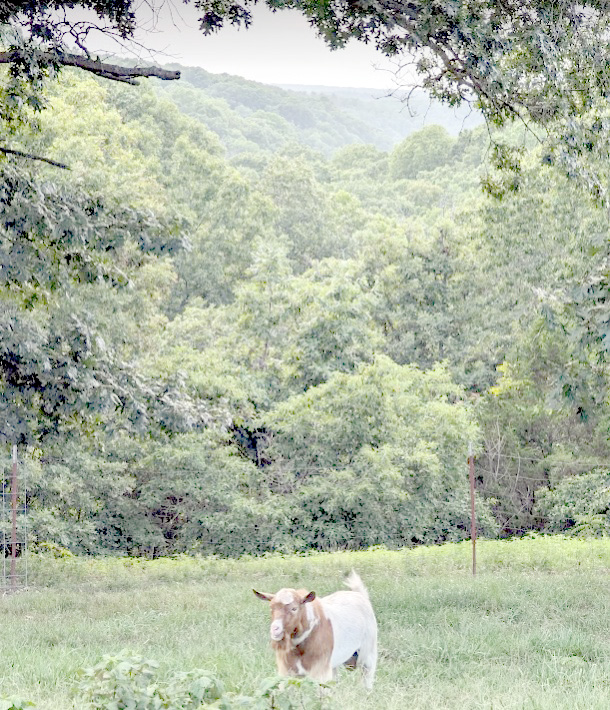
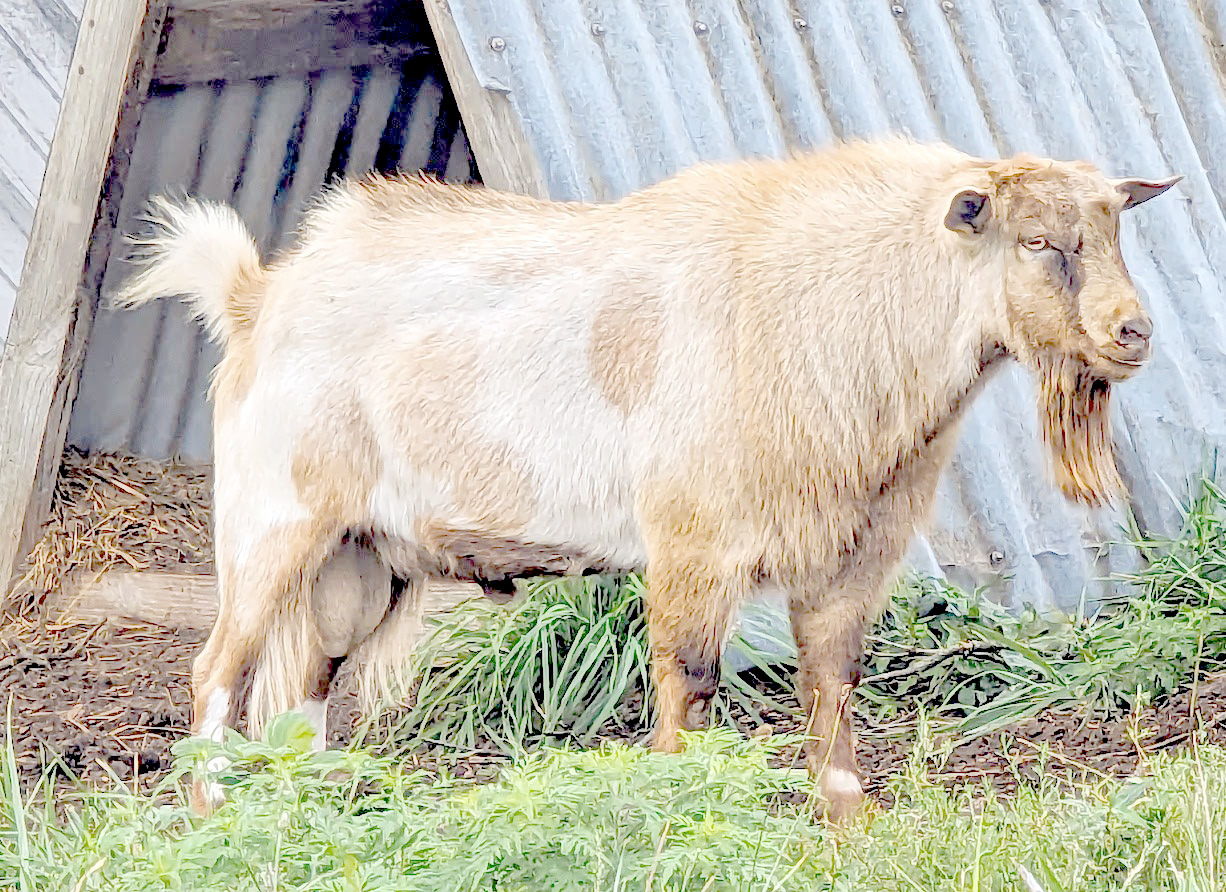

By Sheila Harris sheilaharrisads@gmail.com
Cindy Lynn and James Huggins, of Washburn, are making their Myotonic goat herd – bred, born and raised on their farm, Jamcin Ranch – easily recognizable and prized among breeders.
Cindy said she has loved animals since she was a kid herself, growing up in Wisconsin.
“We couldn’t have dogs or cats in the house because my brother was allergic to them,” Huggins said. “But, when I was 13, my parents bought me my first pet: an Appaloosa pony.”
After graduating from the University of Wisconsin in Madison with a Bachelor’s in Sociology and Psychology, Cindy said the animals she’s owned over the ensuing years have been her own source of therapy.
“I’ve been involved in showing animals – everything from dogs and cats to horses, rabbits and, of course, goats,” said Huggins, who is a licensed judge for the Myotonic Goat Registry (MGR).
Twenty years ago, Cindy and James moved to Washburn from Tontitown, Ark., where they raised Nubian and LaMancha goats, both dairy breeds.
“We decided to try something a little different after we moved to Missouri,” Cindy Lynn said. “I’ve always been fascinated by genetics, and the Myotonic goat breed really appealed to me.
“They’re a heritage goat – with a lineage that goes back hundreds of years – but they were on the endangered list for a while,” she said. “James and I wanted to build and maintain the breed and create our own herd while doing so.”
The Huggins began with Mini Mytonics, which are sometimes as short as 17 inches in height at the withers and can weigh as little as 50 pounds at maturity.
The Huggins now raise regular-sized Myotonics, which generally range anywhere from 80 pounds to 180 pounds, and are several inches taller in height.
The Myotonic goat is known by many additional names, including fainting goat, nervous goat and Tennessee wooden-leg goat – nicknames which describe the goats’ inherited trait of stiffening and falling over when nervous or excited. The condition, called congenital myotonia, relates to a genetic disorder of the chloride channel of the skeletal muscles.
Although the condition is a trait of the Myotonic goat breed, the disorder is recognized among humans, too. Cindy said the condition presents no danger to the goats themselves, as they seem to have an innate defense mechanism which keeps their heads from hitting the ground.
“When they fall, they’re generally down anywhere from ten seconds to one minute,” she said. “The younger goats are more susceptible. They seem to outgrow it a bit when they get older.”
Cindy is protective of her goats, and she forbids prospective buyers or other visitors to her farm to purposely try to startle them. She prefers that people focus on the positive genetic traits of her Myotonic goats.
One such trait, she said, is their gentle nature.
“They give so much more than they receive,” she said. “That’s why a lot of people buy Myotonics for pets, especially the minis.
“They’re not jumpers, either. In fact, we’ve never had one jump the fence. The kids play around on a small log pile we have in the field, but as they mature, they quit climbing.”
Another favorable trait of Myotonics, Huggins said, is their hardiness.
“They really adapt well to their environment,” she said. “We don’t raise barn babies; we have some huts and shelters, and they all get along just fine.”
The breed is also known for its parasite resistance (the Huggins treat for worms once a year) and the wonderful maternal instincts of the does.
“I like watching grandmothers, mothers and grandkids interact with each other,” Huggins said. “They definitely know who they’re related to.”
Myotonic goats are best known among breeders, though, for their muscular stature. Although a bit shorter than some other breeds, they are broader through the shoulders and rump and longer in the loins. Myotonics are bred as meat goats, and command a handsome price in markets where they’re prized.
The Huggins breed their goats to provide breeding stock to prospective buyers.
“We don’t send any goats to slaughter,” she said.
“We have prospective buyers travel here from all over the U.S. to look at our stock,” Huggins said. “Sometimes they come prepared to take them home themselves, or we can provide transport service if they’d prefer.”
Prices for her goats depend on factors such as traits and lineage, said Huggins, who registers all of her animals on the MGR, which has the largest database of any goat registry.
“Myotonic goats can’t be registered until they’re three years old,” she said, “because they’re not considered full-grown until then.”
Now retired from her day job, as well as the show circuit – which involved lots of traveling – Cindy said she and James are focusing on ramping up the genetic quality of their herd – as well as its name in the goat-ranching world.
“Our goal is for buyers to not only recognize our name,” she said, “but for them to also recognize descendants of our goats by their traits and say, ‘That’s a Jamcin!’”

